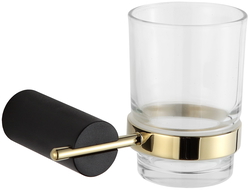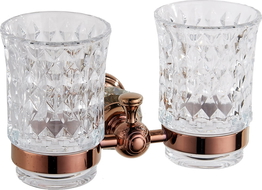
Proper oral hygiene is extremely important. It affects the health of teeth, gums, and even protects against various types of diseases in this area of the body. Therefore, the method of brushing teeth and overall oral care is very important. However, it should be noted that many of us use inappropriate products or apply improper tooth brushing methods. So find out how to take care of your teeth to enjoy a beautiful healthy smile!
Tooth brushing accessories — manual and more
Of course, during oral hygiene, the toothbrush is the most important. Currently, two types of this product are mainly available on the market, namely manual and electric toothbrushes. For each variant, the bristle hardness, its density, and the length of tooth brushing are important. However, electric toothbrushes work more precisely than their manual counterparts. Although it is worth noting possible gum irritation and the exposure of tooth necks in their case. Warning! The same situation may also arise when trying to remove plaque using an ordinary manual toothbrush with hard bristles.
How else can you properly care for your oral cavity?
It is worth knowing that oral care does not end with just brushing teeth. Cleaning the interdental spaces is also very important and should be done using dental floss. This way, after each meal, bacteria can easily be removed from places where the bristle of the toothbrush does not reach.
Additionally, dentists recommend, when brushing teeth surfaces, to also take care of the cleanliness of the tongue, as it is a place particularly susceptible to the presence of impurities. Of course, that's not all. It is also recommended to use products such as oral rinses, which excellently disinfect its entire surface.
Is there an appropriate technique for brushing teeth?
First of all, teeth should be cleaned very thoroughly. Regardless of whether we use electric toothbrushes or manual ones. Naturally, the frequency of brushing impacts oral health significantly. However, in this case, the brushing method is crucial, as it prevents bacterial build-up, while also avoiding enamel erosion, preventing wedge-shaped defects. Therefore, if you want to care for proper oral hygiene, you must brush your teeth properly!
Discover the most important tooth brushing techniques
Experts have developed several methods, so everyone has the opportunity to properly take care of the condition of their mouth. Therefore, known tooth brushing techniques include:
- Vertical method — involves sweeping motions by positioning the toothbrush vertically to the lingual surfaces of the anterior teeth,
- Horizontal method — this technique is based on moving the toothbrush along the chewing surfaces horizontally,
- Roll method — intended for those fighting gum diseases. It involves setting the toothbrush at an appropriate angle, i.e., 45 degrees and brushing teeth in a rotary-sweeping manner,
- Circular method (Fones) — relies on removing plaque through circular motions,
- Massaging cleaning method (Stillmann) — is an ideal brushing method for those dealing with exposed tooth necks. This technique involves setting the toothbrush at a 45-degree angle and performing slightly vibrating motions to remove dental plaque,
- Charters method — this technique is recommended for anyone suffering from gum disease. Therefore, rotating motions should be performed with simultaneous pressure on the gums. Only in this way can tooth enamel be properly cleaned.
What is the proper frequency of tooth brushing? How often to brush your teeth?
Both the oldest highlanders and little children know that plaque causes various types of enamel damage. Moreover, lack of care in the oral cavity is often the cause of gum inflammations and more. Therefore, it is best (at least) to brush teeth twice a day. It should be noted that evening brushing is the most important. This is directly related to the fact that saliva production decreases at night, which is a natural protective barrier of our teeth against harmful bacteria on the tooth surface.
How long to brush teeth?
Many wonder how long tooth brushing should last. With an electric toothbrush, it's simpler because the manufacturer took care of the user, who after 2 minutes receives a signal that it's time to finish dental care. However, when using a manual counterpart, the optimal brushing time should be twice as long. However, it should be remembered that after eating, one should wait for the natural pH level in the mouth to balance. Therefore, in such a case, it's best to brush teeth about 20-30 minutes after consumption.






















